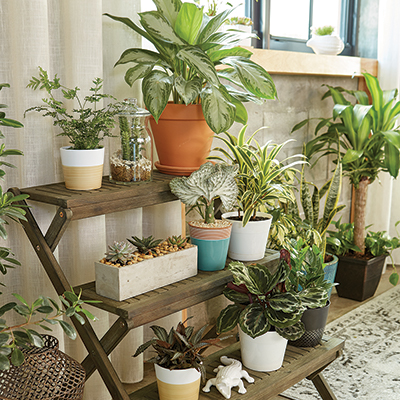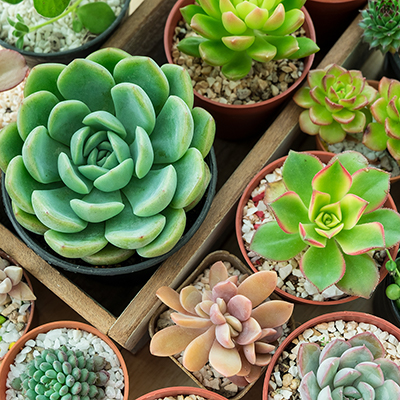Pilea Peperomioides Care

Last updated September 7, 2023
Pilea peperomioides are popular indoor plants seen in modern decor. They are related to succulents and originated in China. They are easy to grow once you get to know their basic needs. This guide will show you proper pilea peperomioides care and how to propagate this popular plant.
Difficulty:
Beginner
Duration:
Under 2 hours
Table of Contents
What are Pilea?
How Much to Water a Pilea?
How Much Sunlight Does a Pilea Need?
Temperature and Humidity Levels for Pilea
How Much Fertilizer Do You Give a Pilea?
How to Repot a Pilea
What are Pilea?
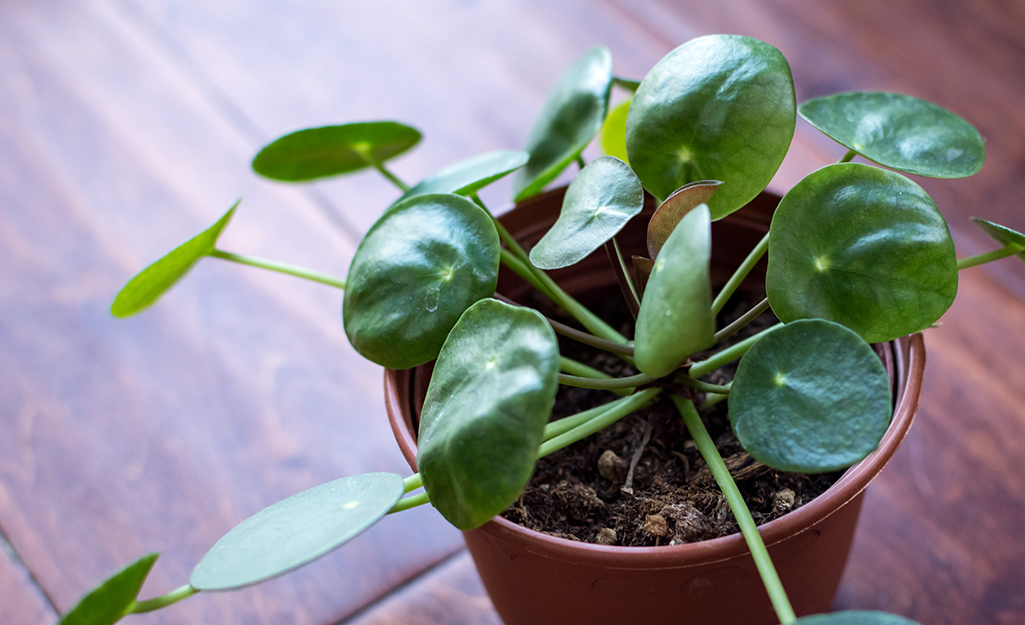
Pilea is a large plant family from the tropical and subtropical regions. There are many different types of plants in this family. Pilea have unique leaves. They are easy to propagate and are low-maintenance.
The most common type is pilea peperomioides, also known as the Chinese money plant, pancake plant, sharing plant, UFO plant or missionary plant.
How Much to Water a Pilea?

When picking a planter for a pilea, choose one with drainage holes. If there are no holes in the pot, the plant is at risk for root rot. If you have a planter without holes, water the pilea less. Check to makes sure the soil doesn’t get too wet.
Check the soil for moisture before you water. Use a soil tester or your finger. Insert the tester one to two inches into the soil. If your tester comes out wet, make sure the plant is not sitting in water. If it comes out dry, it’s time to water your plant. Water the soil, not the plant stem. Pour out any water that drains out of the bottom. Allow the soil to dry between waterings.
How Much Sunlight Does a Pilea Need?
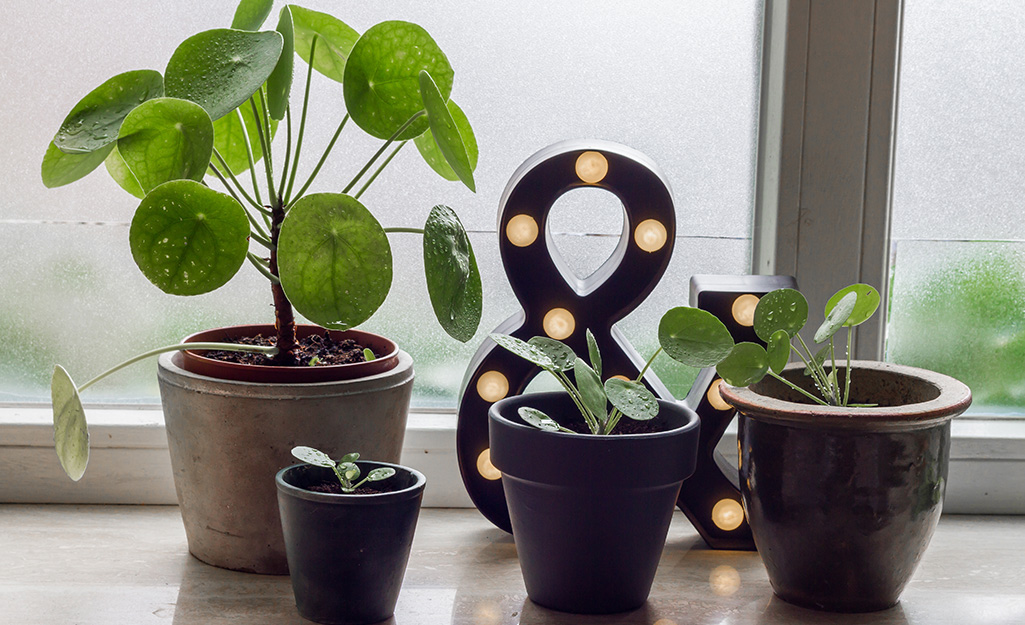
Different types of pilea have their own light needs. Check the plant tag to find the right amount of light for your plant. Most pilea prefer bright, indirect light. Do not place your pilea in direct sunlight as it will scorch the leaves. If your space gets a lot of sun, shield the pilea by using a sheer curtain or moving it away from direct sunlight.
If your plant is not getting enough light, the stems and branches will grow long and leggy. If this happens, move the plant closer to the light or add lamp lighting. Make sure all sides of the plant get equal light by rotating it weekly.
Temperature and Humidity Levels for Pilea
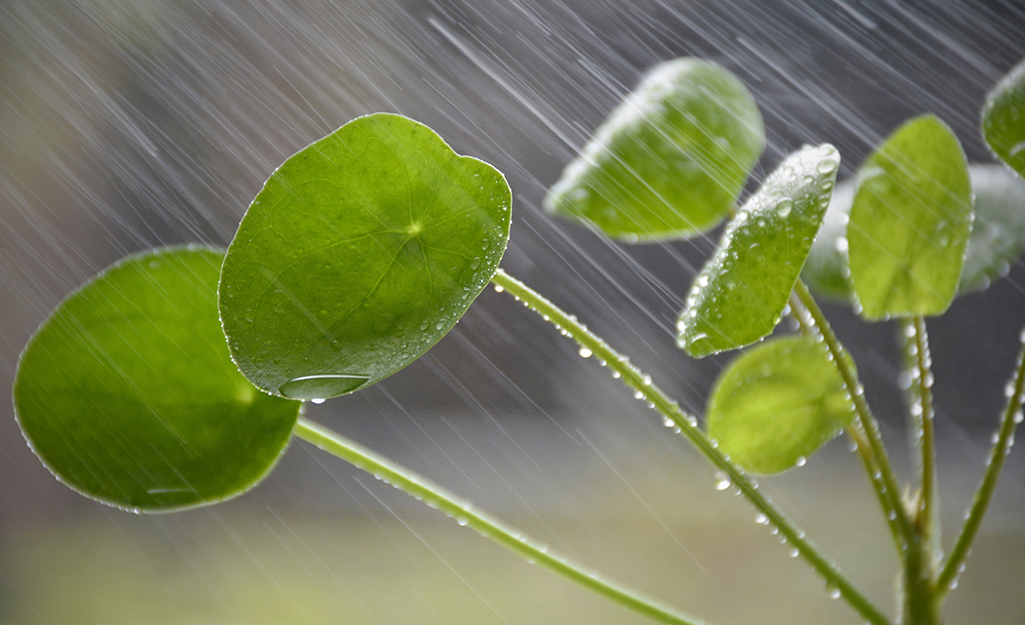
Most indoor plants prefer temperatures between 60 to 75 degrees Fahrenheit and humidity levels of 50 to 75 percent. Low humidity creates brown patches on the tips of plants or the side of leaves. Increase the humidity by spritzing the plant with water a few times a week or placing it on a plant tray filled with water. Grouping a few plants together can also increase the humidity level.
Many pilea varieties enjoy high humidity conditions and grow well in terrariums. Drafts can affect some plants if the air is too cold. Make sure your pilea plant does not live near heating vents in the winter. Heat and low humidity will cause the plant to drop its leaves.
How Much Fertilizer Do You Give a Pilea?
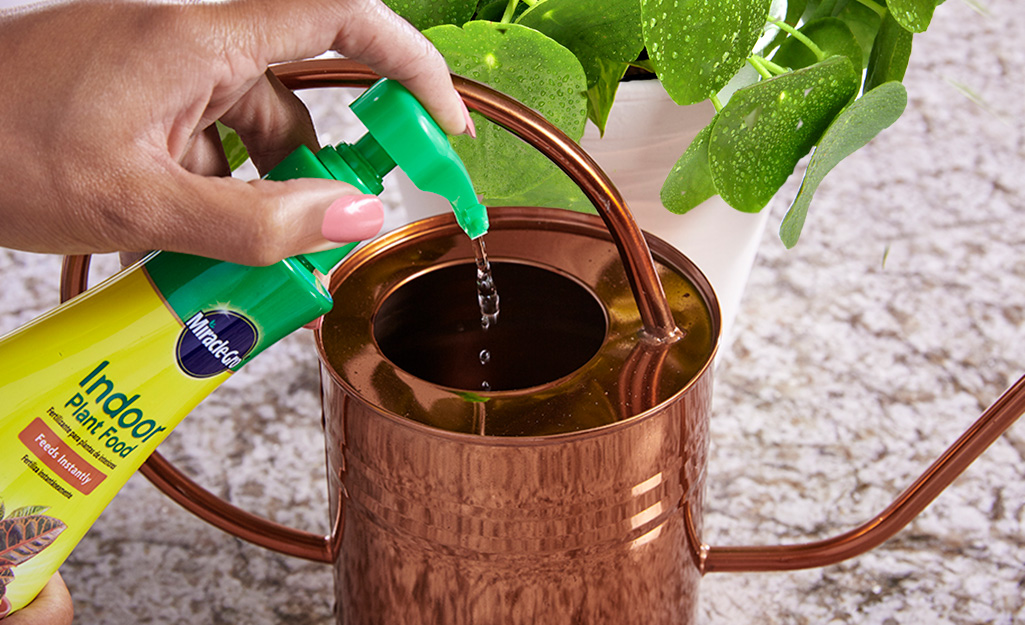
Pilea are not heavy feeders. They require fertilization during their growing season in spring and summer. They do not need fertilizer during their dormant season in the fall and winter. Use a half-strength general liquid houseplant fertilizer. Start with a small amount to make sure the plant is not overfed.
How to Repot a Pilea
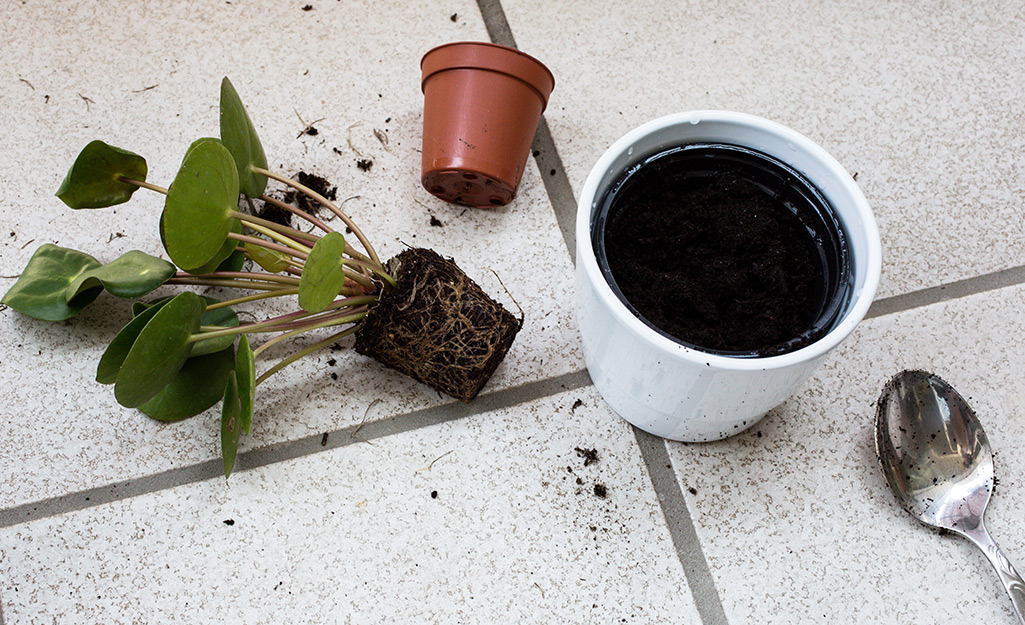
When repotting your pilea, use a well-draining indoor potting mix and follow these steps:
- Use a planter that is two inches larger than the current pot.
- Remove the plant from the old pot by holding the base. Wiggle the roots to stimulate growth.
- Cut away dead leaves.
- Fill the new container with soil to the base of the stem.
Basic Pilea Peperomioides Care
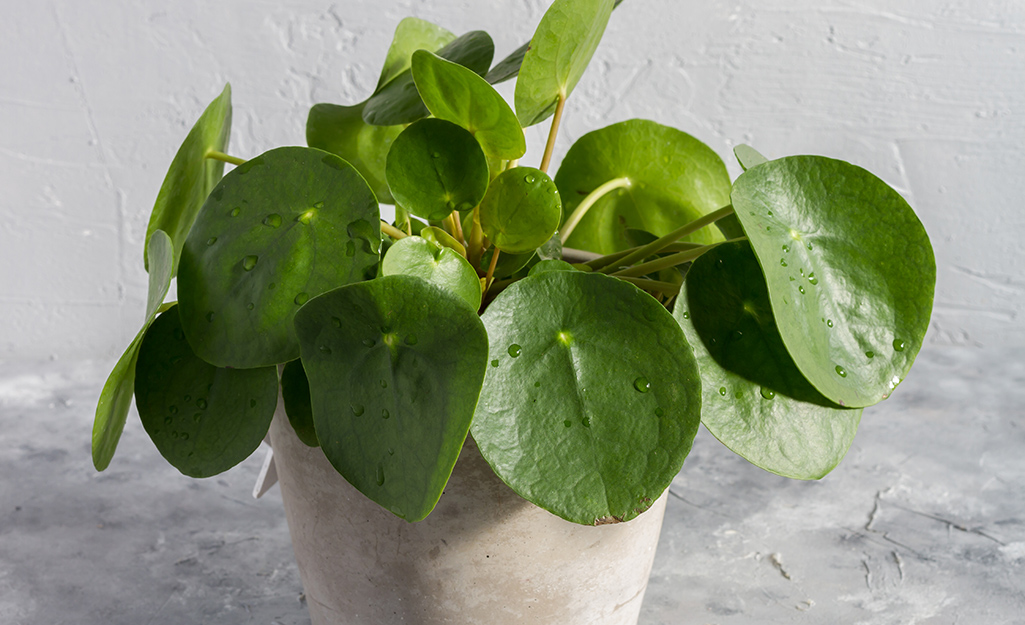
Taking care of pileas is easy and quick. Get rid of dust by wiping the leaves with a cloth or using a leaf shine product. Use extra care with textured leaves.
Harmful insects can be drawn to indoor plants. Check your plants when watering to stop infestation early on. Treat infested plants with organic pest control products such as neem oil. Check nearby plants to make sure bugs have not spread.
All pilea plants are non-toxic to dogs and cats. To be safe, keep the plants out of reach of kids and pets, though. Some plants can cause an allergic reaction.
Propagate Pilea
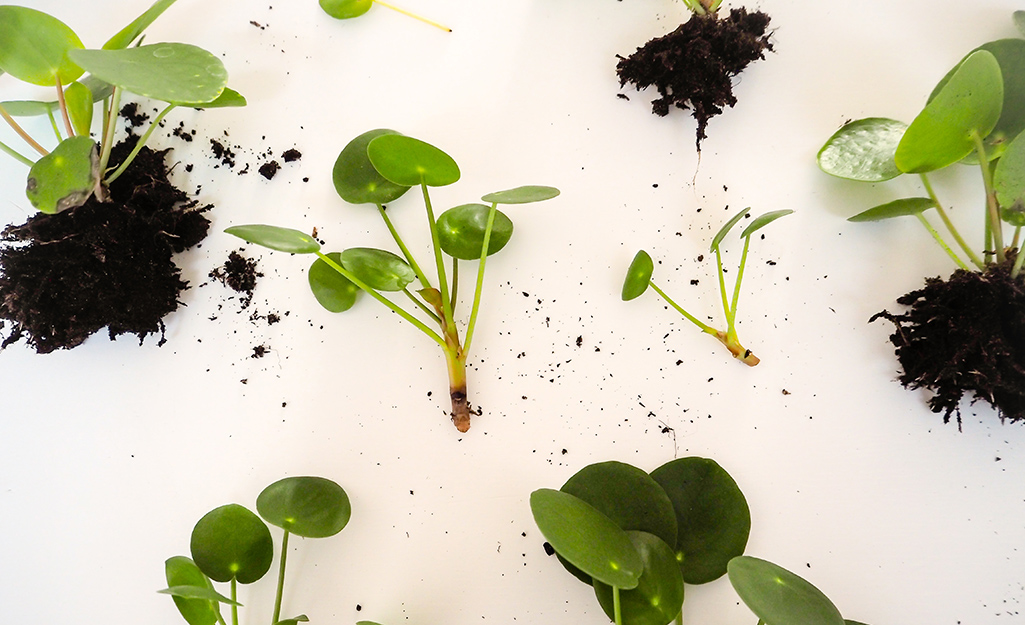
Pilea plants are easy to propagate. The Chinese money variations send plantlets through the soil that can be separated from the parent plant.
Here's how to propagate your pilea:
- Follow the stem one inch under the soil to find the plantlets.
- Use a clean, sharp planting knife to cut the baby plant free.
- Place the plantlets in water until roots develop.
- Once the roots develop, pot it in an indoor potting mix.
- Keep the soil moist until the plant begins to produce new leaves.
Displaying Pilea
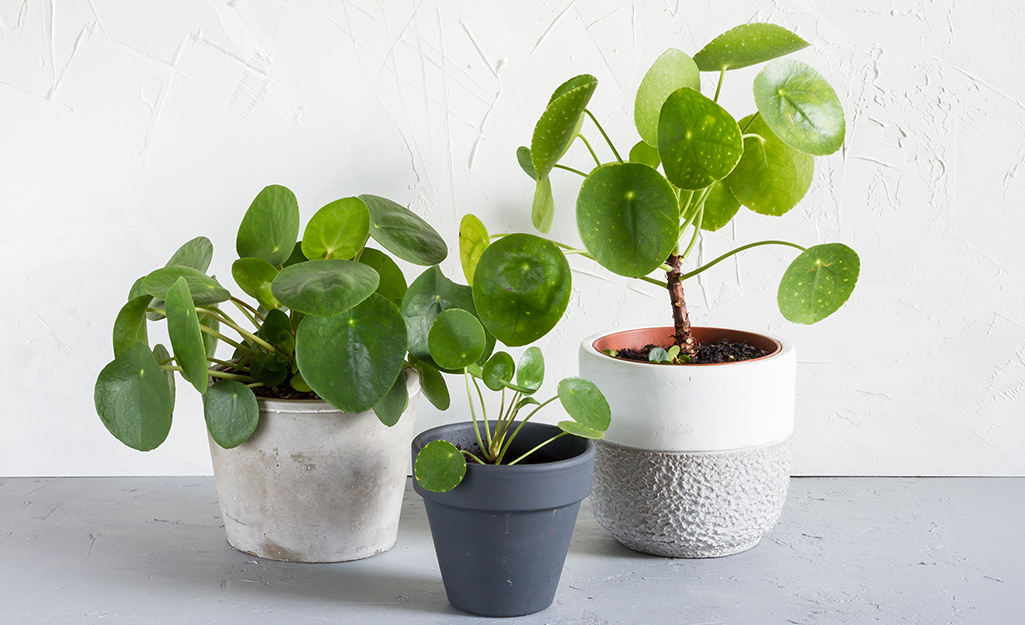
Displaying your pilea can be as exciting as purchasing them. Larger spaces may dictate the need for a larger plant for proper proportion. Pilea plants look especially attractive when grouping many sizes of plants together or displayed in modern planters.
Pilea peperomioides is a wonderful plant for anyone looking to add a little green to their space. These plants are easy to care for and propagate.
Looking for pilea peperomioides and the tools and supplies needed to care for this popular plant? The Home Depot delivers online orders when and where you need them.

